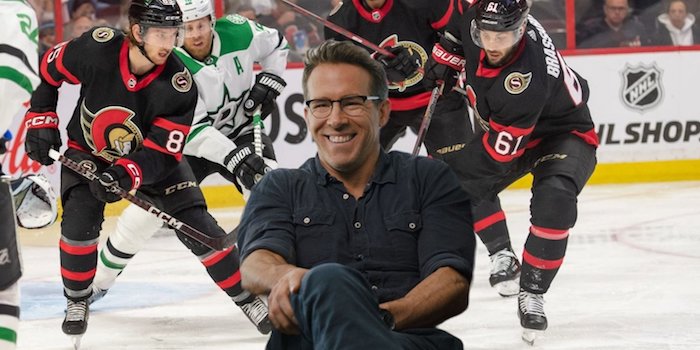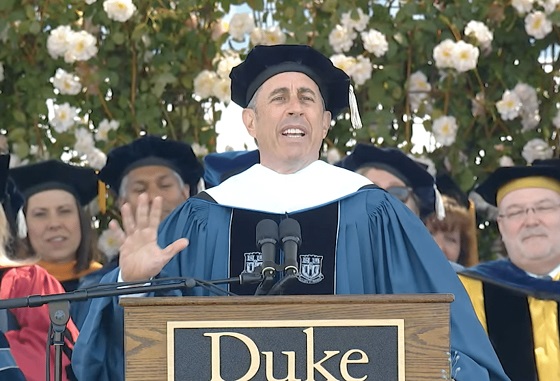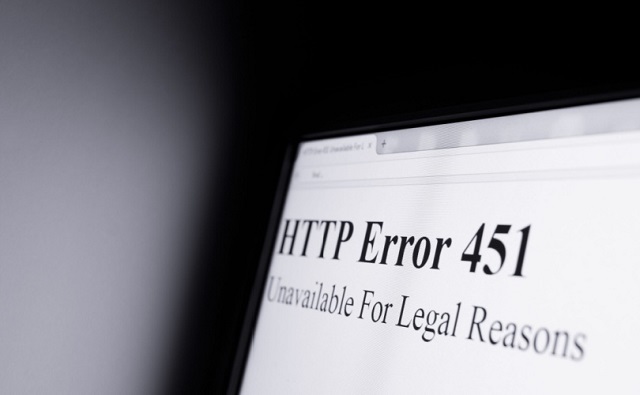Bruce Dowbiggin
Taking Ownership In The NHL Can Be A Thankless Task

If ever there were a sign of the world turned upside down it would have to be the bidding war currently driving the value of the Ottawa Senators over a billion dollars.
Granted there is an arena involved, but the concept of the market in the Nation’s Capital being worth that much is stunning. A city of 935,000 with little or no industry besides IT and government lucre, no media impact and lying two hours away from the Montreal Canadiens heartland seems to defy economic reality.
But we are reading about Canadian actor Ryan Reynolds, rapper The Weeknd and Snoop Dog heading groups said to be interested in the team. (Reynolds’ recent success in buying English football club Wrexham and seeing it promoted to the next division has been the Ted Lasso story in real life.) Other prominent names are being mentioned daily.

On the surface this is good news for all seven Canadian NHL franchises, although the Maple Leafs, Canadiens and Canucks are well capitalized already. For owners of the other teams in Calgary, Edmonton and Winnipeg, however, the notion that their owners could cash out and make substantial profits is tempting. Would they do it if they couldn’t see a championship in their lifetimes?
Contrary to what the public believes, owning an NHL franchise is not a barrel of laughs, hanging out with your hockey heroes and hobnobbing with Gary Bettman at the owners’ meetings. As the expression goes, success has a million fathers but losing is an orphan. So fans should not presume that Canadian NHL owners faced with fans’ scorn and media sarcasm might not look at the billion-dollar Senators deal as a good time to make for the door. Especially those owners who long ago lost the lustre of fandom.
Being a Canadian owner is a worse torture. In my 2014 book Ice Storm we recorded the advice Francesco Aquilini received from a friend with experience of the media when the Aquilini family dove into ownership of the Vancouver Canucks.

To paraphrase, the advice went something like, ‘If you don’t like having your name slurred, your judgment questioned and your intelligence doubted by people in grocery stores, don’t do it’. Alas Aquilini went ahead and bought the Canucks. After almost reaching the Stanley Cup in 2011, it has been a long ride to the bottom for the team.
When things go poorly, owners are never sure who to trust at that point. League sources all have agendas and don’t want to you to improve. Media just want a hot story about despair and disillusionment. So invariably they turn to the community, more specifically some former team hero for advice. In Aqulini’s case it was Vancouver legend Trevor Linden who helped convince the Canucks owner to abandon the established plan developed by president/ GM Mike Gillis and adopt one from a player with experience in the optical and fitness world.

It went as well as you might expect. Monday, the Canucks learned that, despite a truly brutal season, they will not be in line at the draft lottery for Connor Bedard. This is not to pick on the Canucks. Many teams are experiencing the syndrome. If Toronto is swept by Florida MLSE ownership is likely to go looking for a new plan, jettisoning the Kyle Dubas/ Sheldon Keefe regime.
Certainly some of their players may make for the door, heading to warmer climes in tax-free states where no one recognizes them outside the rink. For instance, what happens to pending UFA Auston Matthews if Toronto face-plants this round? Will he stay in Toronto or head closer to his U.S. roots in a tax-free state? As we wrote last month the Calgary Flames saw that happen in the case of UFA Johnny Gaudreau and coming UFA Matthew Tkachuk..

“As the July 1 free-agent deadline approached, Gaudreau announced that, despite an enormous eight-year $80M contract offer from the Flames, he would test free agency. The star winger claimed he wanted to go home so his wife could have their baby in the USA. As such it was believed his preferred venues were Philadelphia or New Jersey or even the New York Islanders.
Calgary hoped against hope for a reversal of that decision, but Flames fans quietly fans resigned themselves that he wanted to be nearer to family. To their shock and surprise Gaudreau would only travel as far as Columbus, Ohio, to find a new home, taking $15M less than Calgary’s offer to play on the Blue Jackets, a team with few real hopes of playoff contention.
Things were about to get worse for the Flames. Gaudreau’s linemate Matthew Tkachuk told Treliving on July 20, 2022, that he would not sign longterm in Calgary after his contractual options were done in 2023. To buy time to create a deal for Tkachuk the Flames announced they were taking him to salary arbitration.
It went for naught. Tkachuk phoned GM Treliving and told him he wanted out. “Matthew did not have an appetite and would not sign with the Calgary Flames long term,” Treliving said. “He outlined the reasons for this. … Ultimately (he) made the decision and informed us that being a Calgary Flame long term was not in his plans.” There were real concerns that the hole left in the Flames’ roster by the defections could be irreparable.”
Irreparable they were, despite a blockbuster trade for Jonathan Huberdeau and signing UFA Nazim Kadri. Huberdeau’s production collapsed, Kadri seemed lost, coach Darryl Sutter and GM Brad Treliving were fired and Tkachuk is now leading the Florida Panthers to a shock sweep of the Leafs in the second round off the playoffs.
How that shakes out in Calgary is up in the air. But if the Flames’ aging ownership group gets an offer from The Weeknd it can’t refuse, don’t be surprised if the club winds up under new ownership. And that ownership eventually ends up somewhere else.
Sign up today for Not The Public Broadcaster newsletters. Hot takes/ cool slants on sports and current affairs. Have the latest columns delivered to your mail box. Tell your friends to join, too. Always provocative, always independent. https://share.hsforms.com/16edbhhC3TTKg6jAaRyP7rActsj5
Bruce Dowbiggin @dowbboy is the editor of Not The Public Broadcaster A two-time winner of the Gemini Award as Canada’s top television sports broadcaster, he’s a regular contributor to Sirius XM Canada Talks Ch. 167. Inexact Science: The Six Most Compelling Draft Years In NHL History, his new book with his son Evan, was voted the seventh-best professional hockey book of all time by bookauthority.org . His 2004 book Money Players was voted sixth best on the same list, and is available via http://brucedowbigginbooks.ca/book-personalaccount.aspx
Bruce Dowbiggin
Jerry Came to See The Babies. And They Walked Out On Him

Cometh the hour, cometh the comedian. Or, you can learn a lot about a demographic by what makes them laugh.
The legacy/ lunacy media schvitzed itself over a few furious sociology majors and look-at-me drama queens walking out on Jerry Seinfeld’s commencement address at Duke University last weekend. But the significance of his admission that he was 70 was probably far more newsworthy to those now in retirement, binge-watching his eponymous TV series on one of those down-the-dial channels.
If we had a dollar for every Boomer who said, “Seinfeld is 70?” while watching the address we’d be Warren-Buffett-rich this morning. He doesn’t look like any 70 year olds we know. Fifty? Maybe. But listening to his familiar delivery, the mocking on his honorary degree costume, it was easy to believe that we, too, are much younger than our blood-thinner prescriptions say.
It also pointed out the evolution of Boomers’ comedic tastes. When they came of age in the late 1960s/ early 1970s Woody Allen best profiled as his generation’s comedic muse. With a dozen classic movies ranging from What’s New Pussycat (1965) through Play It Again Sam (1972) to Annie Hall (1977) Allen’s self-deprecating nebbish captured the romantic/ridiculous self-image of Boomers with “Some drink deeply from the river of knowledge. Others only gargle”.

The neurotic, insecure Allen then decided to become Ingmar Bergman, and Boomers— now assembling jobs, children and first spouses— moved on. But for that 12-year span the bedraggled standup comedian was the go-to with lines like “Just because you’re paranoid doesn’t mean they aren’t out to get you” and “The only love that lasts is unrequited love.”
Woody’s pointed contemporary political references in those years were few (conflating “D’you” for “Jew” with Tony Roberts in Manhattan) and self-deflating (see Annie Hall). His most prominent political jabs were framed in absurdist material like Love And Death and Bananas. Culturally he was merciless but affectionate about his Brooklyn upbringing. In short his were perfect date movies for Boomers seeking love to advertise their pretensions.
Flash forward from Woody to Seinfeld (created with Larry David) which was anti-romantic in the extreme. The characters were sociopaths. The situations often cringeworthy. The 24-minute formula harkened back to Lucy and the Honeymooners. And while schlock like Friends trod the same ground it was Seinfeld that somehow captured the Boomer zeitgeist.
Why? Boomers going through middle age were too disillusioned with how life was turning out to romanticize anymore. The self-obsessed characters were people they knew from work, school and dealing with government. Smirking Bill Clinton was the face of an era. “When we did my show in the 90s, it was so easy to make fun of things. It was so easy,” Seinfeld told Amy Schumer.
Significantly, Seinfeld the Show was cultural. Or quasi-cultural. It was never about politics per se. It was about the people who thwart you in life. Whose vanity ruins your plans from school days. Who go 50 mph in the left lane. “When is Jerry going to see the baby?” It rarely challenged its fans on an emotional level. It was mostly about navigating madness.
And often about the most mundane elements of life. The address on the weekend contained The Seinfeld Doctrine of Lowered Expectations. “It’s easy to fall in love with people. I suggest falling in love with anything and everything, every chance you get. Fall in love with your coffee, your sneakers, your blue zone parking space. I’ve had a lot of fun in life falling in love with stupid, meaningless physical objects.
“The object I love the most is the clear-barrel Bic pen — $1.29 for a box of 10. I can fall in love with a car turn signal switch that has a nice feel to it, a pizza crust that collapses with just the right amount of pressure. I have truly spent my life focusing on the smallest things imaginable, completely oblivious to all the big issues of living.”
Reaching across the generations Seinfeld delivered Dad jokes and bromides to kids who education probably cost $100 K a year. “I think it is also wonderful that you care so much about not hurting other people’s feelings in the million and one ways we all do that,” he said. Then he explained why that might be a fruitless pursuit. Not in Curb Your Enthusiasm darkness. But sobering.
That’s why it was in character for him to let the furious demonstrators depart at Duke without comment. So was appearing at Duke, the Ivy League of Tobacco Road, founded by the people who made jillions selling nicotine. And why he let them garb him like Thomas Cromwell in the absurd 16th century cape and hat so he could score few laughs.

Because laughter is his means of dealing with jerks like the outbound Hamas crowd. “What I need to tell you as a comedian: Do not lose your sense of humour. You can have no idea at this point in your life how much you are going to need it to get through. Not enough of life makes sense for you to be able to survive it without humour.”
Yes, He has been vocal lately about the effect of political correctness ruining TV comedy. Drawing flak from former friends and fans who are in the Biden re-education camps at the moment. But his annoyance at ruining an art form far outweighed any complaints about Covid and Ukraine.
As opposed to the nihilism of his former partner David, his insouciance and comic patter represent an antidote for where most of his original fans are at the moment. Woody Allen, their former idol, is now seen as a pedo and a failed nouveau vage auteur. Disillusioned with virus lies, electoral shenanigans and soaring prices, Boomers on a pension are unanchored, floating through what used to be North American society (when only women had babies).
In fact, Boomer spectators watching Seinfeld’s 17-minute speech maybe summed it up for themselves by recalling the Seinfeld mantra, “It was a show about nothing.” And they’d be right. Jerry is the man for those times.
Bruce Dowbiggin @dowbboy is the publisher of Not The Public Broadcaster A two-time winner of the Gemini Award as Canada’s top television sports broadcaster, he’s a regular contributor to Sirius XM Canada Talks Ch. 167. Now for pre-order, new from the team of Evan & Bruce Dowbiggin . Deal With It: The Trades That Stunned The NHL & Changed Hockey. From Espo to Boston in 1967 to Gretz in L.A. in 1988 to Patrick Roy leaving Montreal in 1995, the stories behind the story. Launching in paperback and Kindle on #Amazon this week. Destined to be a hockey best seller. https://www.amazon.ca/Deal-Trades-Stunned-Changed-Hockey-ebook/dp/B0D236NB35/
Bruce Dowbiggin
Why Do The Same Few Always Get The Best Sports Scoops?

The Toronto Maple Leafs made the “what colour is that green light?” decision to fire their head coach Sheldon Keefe last week. The removal of Keefe after five years followed a dispiriting first-round playoff series loss to a very ordinary Boston Bruins team. Coaching may or may not have been the root cause of that loss. (Keefe himself admitted “teams are waiting for the Leafs to beat themselves”.)
The real reason for the firing is 1967, and we don’t think we need add more than that.
In essence, the management of MLSE— the owner of the Maple Leafs and a lot of other sports stuff in Toronto— needed to throw a body to the baying hounds of disappointment. Also known as Leafs Nation. Newly minted CEO Keith Pelley, fresh from the PGA Tour/ LIV psychodrama, was certainly not going to pay the price.
Nor was GM Brad Treliving who has only been on the job for two seasons. The key decisions on Toronto’s lopsided salary cap were decided long before Treliving occupied his desk. That left two people in vulnerable positions. 1) Maple Leafs president Brendan Shanahan, who has been drawing an MLSE cheque for a decade. 2) Keefe.
When was the last time you saw a coach fire a team president? Precisely. Keefe joins the list of (briefly) unemployed coaches who circulate in the NHL like McKinsey consultants. Shanahan gets a lukewarm mulligan from Pelley. But after the failure of the Kyle Dubas experiment— “who needs experience?”— and now just a single playoff series win in a decade Shanny’s best-before date has arrived.

Toronto Maple Leafs president Brendan Shanahan attends a news conference in Toronto on April 14, 2014. Toronto Maple Leafs president Brendan Shanahan said Peter Horachek will remain the team’s interim head coach until the end of the season. Shanahan met the media Friday for the first time since coach Randy Carlyle was fired on Tuesday. THE CANADIAN PRESS/Chris Young
Depending on who he and Treliving enlist to coach— remember, Mike Babcock was too tough and Keefe was probably too player friendly— it had better produce instant results. Because Shanny, the pride of Mimico, is out of chances. The coach choice will also be affected by whichever player or players that management decides are superfluous to ending the Leafs’ ridiculous run of misery.
The Leafs brass’ press conference last Thursday did little to shed light on what happens after Keefe’s expulsion. Just a lot of MBA determinism on a bed of baffle gab. A crabby Steve Simmons question/rant briefly threatened the harmony of the moment, but order was restored. And the media bitching switched from the press box to social media and podcasts.
Speaking of the fourth estate, the other unmentioned aspect of this story— indeed every story in the NHL these days— is just how it was revealed to the public. When people sipped their morning Tim’s or Starbucks the (almost) coincident bulletins came down the social media pike about Keefe’s dismissal.
Predictably, Chris Johnston of Sportsnet and Daren Dreger of TSN announced the breaking news within heart beats of each other. While there had been speculation on Keefe’s fate for days, the announcement coming from the networks duo confirmed the story in the minds of the industry. That allowed everyone else drawing a cheque as a hockey journalist to pile in and swarm the dead body.
In today’s sports journalism, where social media has replaced newspapers, scoops are governed by a protocol. There are the heralds— in the NHL it’s currently Johnston and Dreger— and then there are the disseminators. The days of a rabble of reporters all scrambling to get a story bigger than who-will-play-in-tonight’s-game are gone. Today, it’s a very narrow funnel for scoops.
It’s the same in the NFL where Ian Rappaport (NFL Network) and Adam Schefter (ESPN) monopolize the tasty scoops on behalf of their employers, who also happen to be NFL rights holders. In the NBA, Brian Windhorst (ESPN) has the inside rail when it comes to the LeBron James/ Steph Curry scoops. In MLB… it’s probably Ken Rosenthal (The Athletic) but no one cares about baseball anymore, do they?
The leagues like it this way, doling out stories to guys they can trust. None of this is criticism of Johnston or Dreger, who have deftly maneuvered themselves into the coveted “from their lips to your ears” spots. From our own experience we can remember the exhilaration of having the best source or sources on the really big stories. Like Johnston/ Dreger, we worked hard for a long time to develop those sources and only very reluctantly let anyone else horn in on our stories.
It was also our observation that this order of things journalistic suited a lot of reporters who either couldn’t get good sources or didn’t want the stress of being first on stuff. It was enough that, like the Keefe story, they’d get the goods eventually and most fans would not care who was first. So long as you had a take. So be it.
Some resentful types took potshots at our work if it upset their pals in the dressing room or the management suite. On the Stephen Ames/ Tiger Woods story in 2001, we had the late Pat Marsden tell us on air that we’d done a great job on Ames’ criticisms of Tiger. Only to hear him lambaste us— again on FAN 590— only minutes later as we listened driving home from the studio. But we digress.
Many reporters are complacent in playing the game, so long as their bosses didn’t enquire why they are getting scooped all the time by the same few rivals. With the death of daily newspapers that doesn’t happen much any longer. (Many editors today may only see stories when publication brings a libel notice.) For them a salty take is good enough.
The scoop business is also affected by the multiple roles now demanded of sports media types. In addition to their “day job” on a beat they also have to supply digital content and talk-back hits to the Mother Ship. Most also are feeding a weekly podcast, dictating time on air rather than time working the phone. There are only so many hours in a day to chase a story.
Better to play the Breaking News waiting game.
Bruce Dowbiggin @dowbboy is the publisher of Not The Public Broadcaster A two-time winner of the Gemini Award as Canada’s top television sports broadcaster, he’s a regular contributor to Sirius XM Canada Talks Ch. 167. Now for pre-order, new from the team of Evan & Bruce Dowbiggin . Deal With It: The Trades That Stunned The NHL & Changed Hockey. From Espo to Boston in 1967 to Gretz in L.A. in 1988 to Patrick Roy leaving Montreal in 1995, the stories behind the story. Launching in paperback and Kindle on #Amazon this week. Destined to be a hockey best seller. https://www.amazon.ca/Deal-Trades-Stunned-Changed-Hockey-ebook/dp/B0D236NB35/
-

 Crime2 days ago
Crime2 days agoThe US Canadian border: Greatest number of terrorist watch list individuals being apprehended at northern border
-

 Economy1 day ago
Economy1 day agoCanadians experiencing second-longest and third steepest decline in living standards in last 40 years
-

 espionage8 hours ago
espionage8 hours agoThe Scientists Who Came in From the Cold: Canada’s National Microbiology Laboratory Scandal, Part I
-

 National7 hours ago
National7 hours agoTrudeau’s internet censorship Bill C-11 will not be implemented until late 2025
-

 Great Reset1 day ago
Great Reset1 day agoBiden Administration Eager to Sign WHO Pandemic Treaty
-

 Energy1 day ago
Energy1 day agoNew Report Reveals Just How Energy Rich America Really Is
-

 Opinion1 day ago
Opinion1 day agoOrdinary working Canadians are not buying into transgender identity politics
-

 Economy1 day ago
Economy1 day agoFeds spend $3 million to fly 182 politicians and bureaucrats to climate conference







